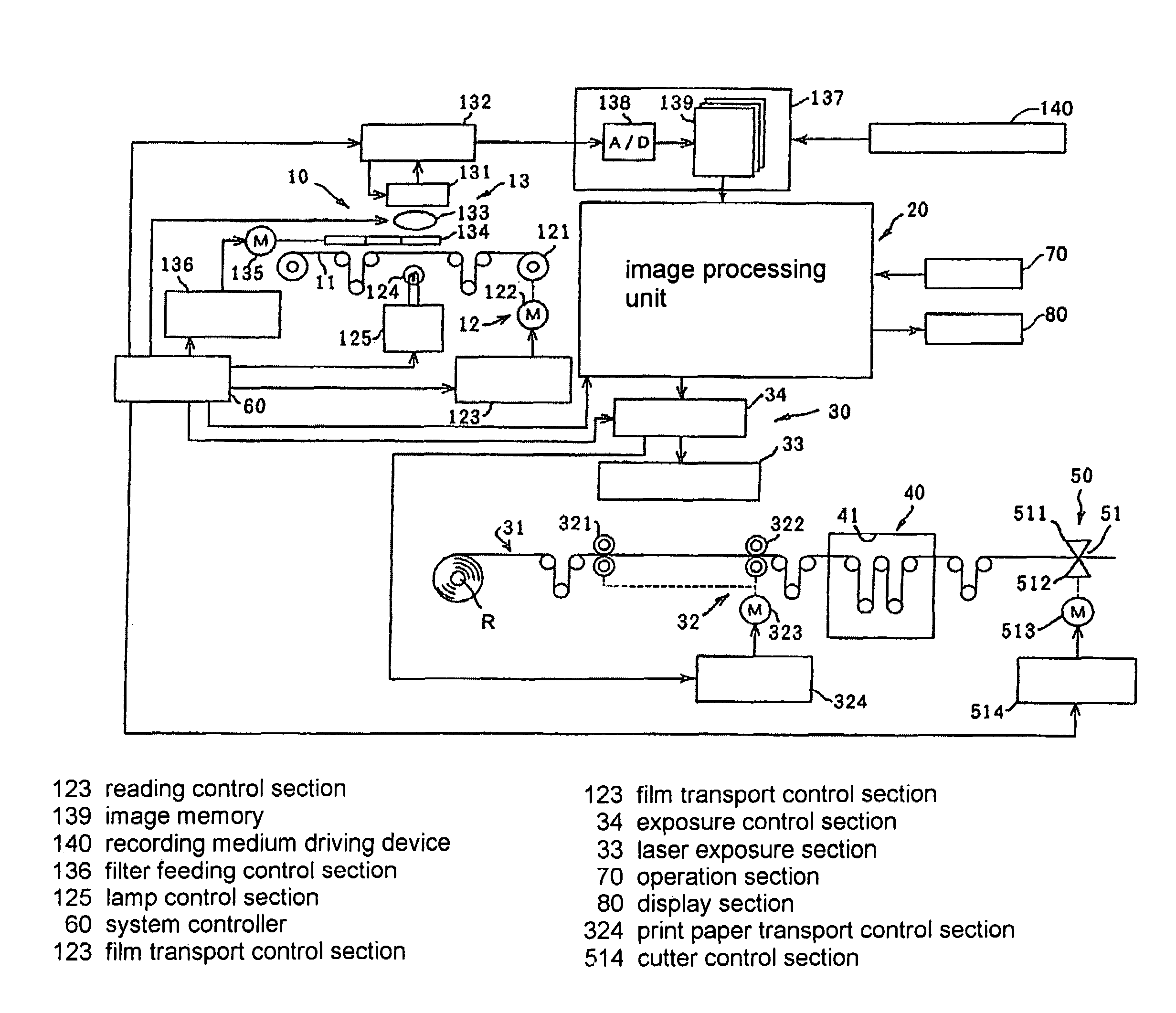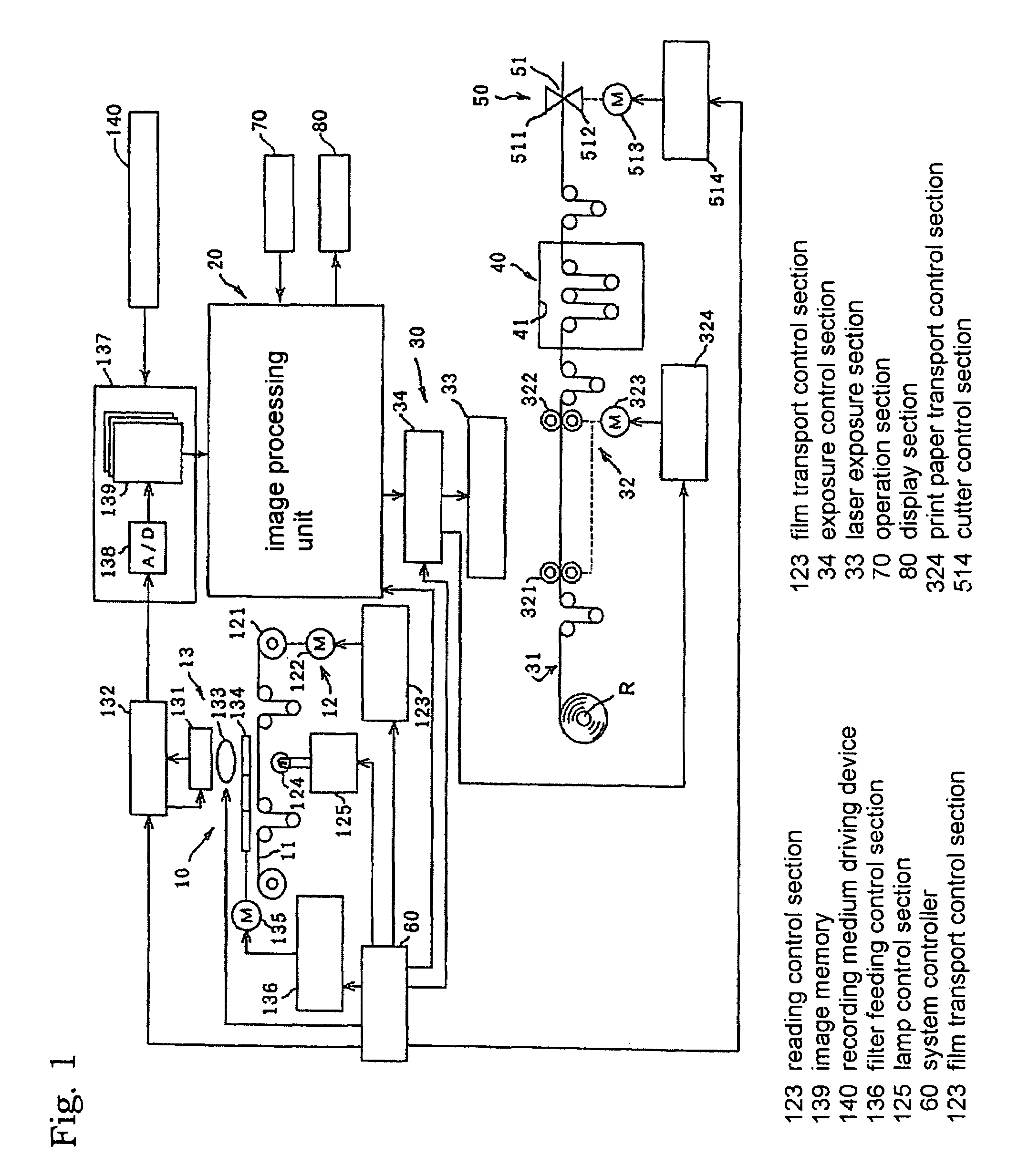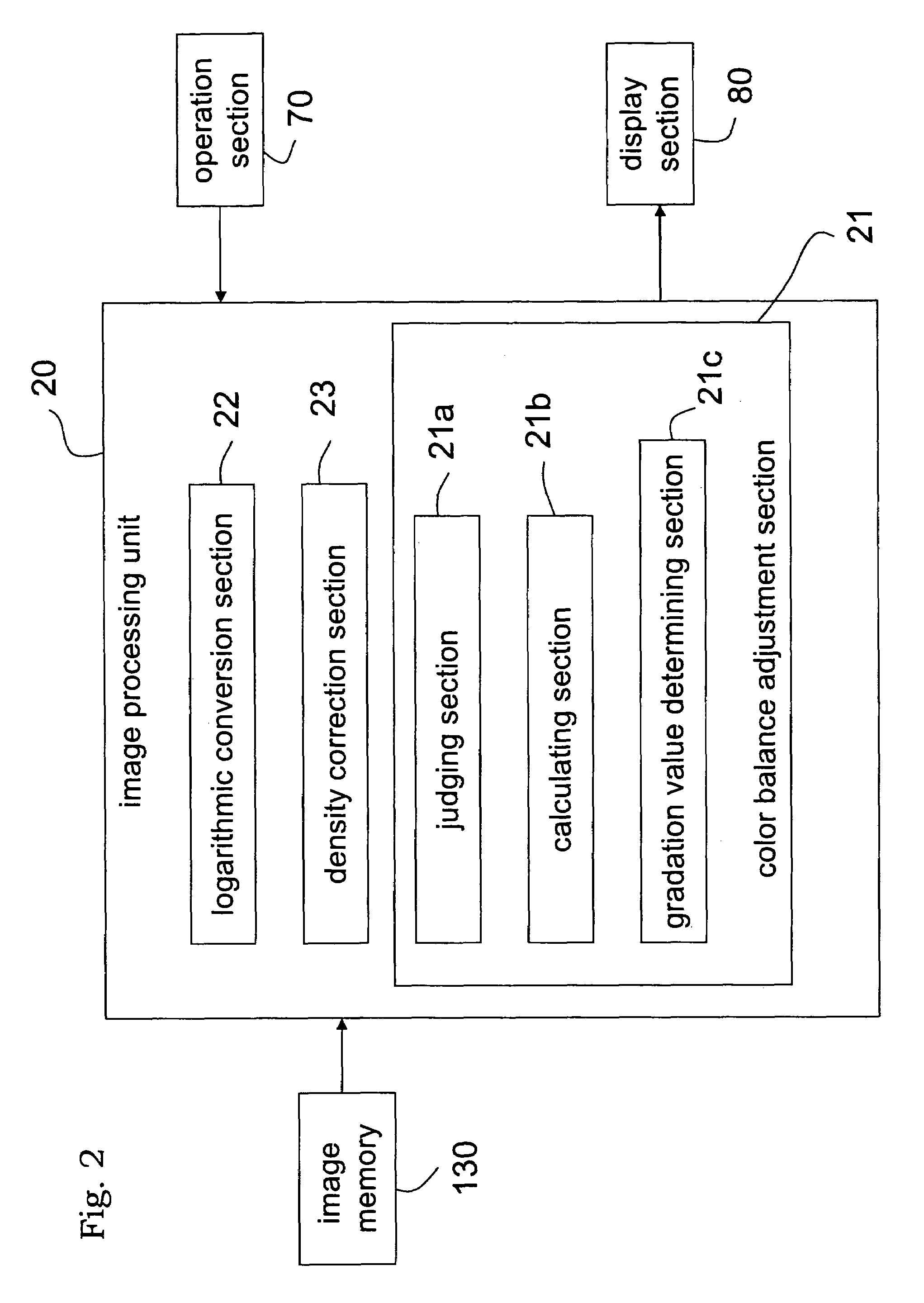Conversion correcting method of color image data and photographic processing apparatus implementing the method
a technology of conversion correction and color image data, which is applied in the direction of digitally marking record carriers, color signal processing circuits, instruments, etc., can solve the problems of affecting the color reproducibility of the output image data of the respective color components, and affecting the color reproducibility of the correction. , to achieve the effect of preventing loss or disturbance of the original color balance and reducing the disadvantage of color reproducibility
- Summary
- Abstract
- Description
- Claims
- Application Information
AI Technical Summary
Benefits of technology
Problems solved by technology
Method used
Image
Examples
first embodiment
[0064]FIG. 1 is a view showing a schematic construction of a photographic processing apparatus implementing an image processing technique relating to the present invention. In this figure, the photographic processing apparatus includes a film scanner 10 for reading an image from e.g. a developed negative film or positive film and storing the image therein, an image processing unit 20 for effecting a predetermined image processing on image data sent from the film scanner 10 or image data directly read from an image recording medium, an image exposure section 30 for converting the processed image data into optical signals and exposing a print paper, a development section 40 for developing the exposed print paper, a cutting section 50 for cutting the developed and dried print paper into a one-frame piece, and a system controller 60 for controlling the operations of the entire system.
[0065]The film scanner 10 includes a film transporting section 12 for transporting the each frame of the...
example 1
[0098]For a pixel A having input gradation values of IN (B, G, R)=(150, 200, 250), suppose correction values: (b, g, r)=(200, 250, 300) were obtained from the correction function. In this, since the density correction section 23 outputs 8-bit digital image data, the maximum output gradation value is 255. Therefore, the correction value: r=300 obtained from the correction function overflows from the possible range of the output gradation. Therefore, this pixel A is judged as an inappropriate pixel by the judging section 21a. Hence, the chopping is effected on this: r=300 of the pixel A, thereby to obtain: (B, G, R)=(200, 250, 255).
[0099]Next, for the pixel A, the calculating section 21b calculates the differences Δb, Δg, Δr and DR. Of the correction values b, g, r obtained from the correction function, the minimum value is b=200 and the maximum value is r=300. Then, the above calculations are carried out as:
Δb=b−min=200−200=0
Δg=g−min=250−200=0.50
Δr=r−min=300−200=100
DR=max−min=300−200...
example 2
[0104]For a pixel C having input gradation values of IN (B, G, R)=(0, 50, 100), suppose correction values: (b, g, r)=(−50, 0, 100) were obtained from the correction function in the density correction. In this, the minimum output gradation value of the digital image data outputted from the density correction section 23 is 0. Therefore, the correction value: b=−50 obtained from the correction function underflows from the possible range of the output gradation. Therefore, this pixel C is judged as an inappropriate pixel by the density correction section 23. Hence, the chopping is effected on this: b=−50 of the pixel C, thereby to obtain: (B, G, R)=(0, 0, 100).
[0105]Next, for the pixel C, the calculating section 21b calculates the differences Δb, Δg, Δr and DR. Of the correction values b, g, r obtained from the correction function, the minimum value is b=−50 and the maximum value is r=100. Then, the above calculations are carried out as:
Δb=b−min=−50−(−50)=0
Δg=g−min=0−(−50)=50
Δr=r−min=10...
PUM
 Login to View More
Login to View More Abstract
Description
Claims
Application Information
 Login to View More
Login to View More - R&D
- Intellectual Property
- Life Sciences
- Materials
- Tech Scout
- Unparalleled Data Quality
- Higher Quality Content
- 60% Fewer Hallucinations
Browse by: Latest US Patents, China's latest patents, Technical Efficacy Thesaurus, Application Domain, Technology Topic, Popular Technical Reports.
© 2025 PatSnap. All rights reserved.Legal|Privacy policy|Modern Slavery Act Transparency Statement|Sitemap|About US| Contact US: help@patsnap.com



